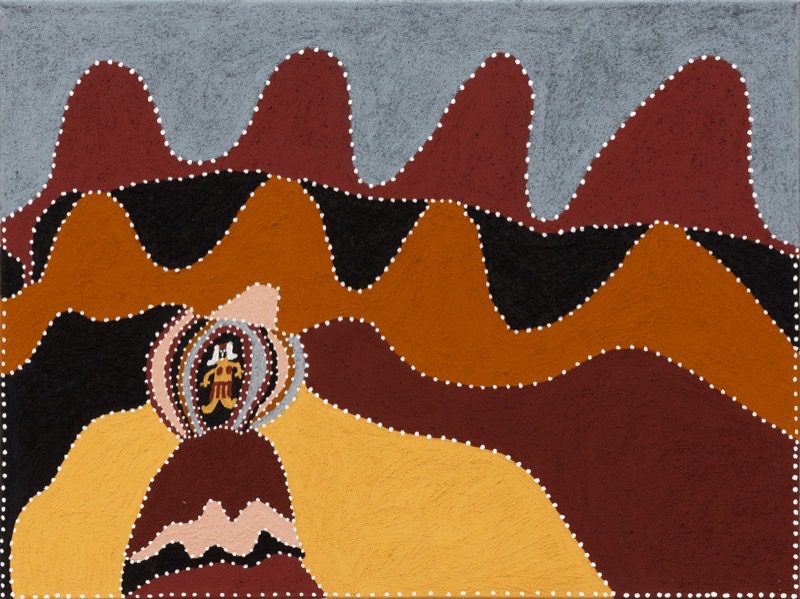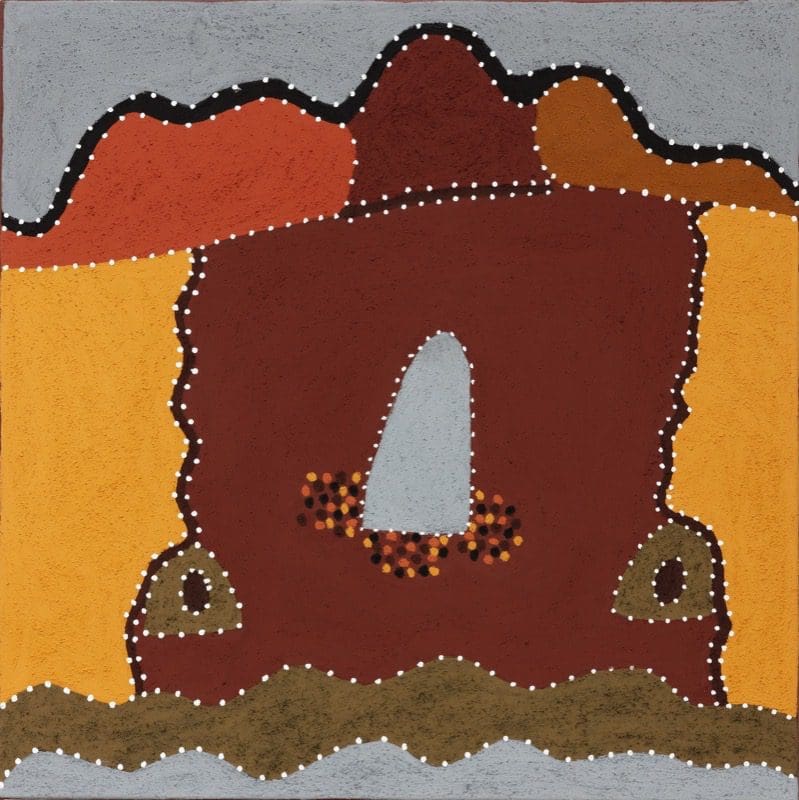
Making Space at the Table
NAP Contemporary’s group show, The Elephant Table, platforms six artists and voices—creating chaos, connection and conversation.




Shirley Purdie paints, as she says, “to tell stories and to pass the stories and paintings along to my family and grandchildren and great-grandchildren.” These are ancestral stories of Country and Ngarranggarni (Dreaming), but also sites and moments that resonate with Purdie, from her birthplace of Mabel Downs Station to her family history.
A senior Gija artist from the Warmun community in the Kimberley region of Western Australia, Purdie is influenced by acclaimed Kimberley artists. “There was Queenie McKenzie and Uncle Jack Britten and Rover Thomas, and my mother Madigan Thomas,” she says.
McKenzie and Madigan Thomas were among the first women artists to paint at Warmun in the early 1980s—then later, in the 1990s, Uncle Jack Britten said to Purdie, “You like to paint? I can get you a board and you do a painting.” Purdie says she “just went from there”. She now has a two-decade practice and is known for her rich use of ochre that is collected on Country. Purdie’s newest paintings develop her stories of family and Country.
For example, Baggabal Gilban – Porcupine, Mabel Downs captures Purdie’s father’s totems—the fire and the porcupine—alongside a water python, Wallengernan, of which her father is a reincarnation. Meanwhile another recent painting, My Life. My Family., is a startling juxtaposition of an Aboriginal man being violently whipped against a tree, by two white station managers, at Violet Valley (Barloowan) before Purdie’s time. This is set against the relatively peaceful domestic life on Mabel Downs Station (Gilban) that Purdie experienced. After this whipping, Purdie’s grandfather created an escape plan that ensured his family’s safety for generations. As Purdie says, “So, my mother and her family packed up and got away. That’s them on the cart, and they go to a station with a nice gardiya (white person). That new station is where my mum met my dad and had all us mob, so she was happy—good place.”
Shirley Purdie
Olsen Gallery
6—23 April
This article was originally published in the March/April 2022 print edition of Art Guide Australia.